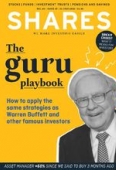Archived article
Please note that tax, investment, pension and ISA rules can change and the information and any views contained in this article may now be inaccurate.
Ferrari’s share price race is still in top gear

It is not just Ferrari’s army of Formula 1 fans that have something to cheer following last weekend’s victory at the British Grand Prix. Investors have been winning with the iconic sports car brands’ stock performance too.
Last month the Ferrari share price hit a record $149.33, marking a near-200% increase since the company listed at $52.00 on the New York stock market in October 2015. At the time investors worried that the shares were too expensive because they were valued as if Ferrari was a luxury goods company, not an automotive engineering industry sports car maker.
Designer hand bags, haute couture clothing and fancy jewellery makers typically require little capital investment to keep up with technology changes.
But Ferrari’s financial performance since then has belied those fears. In early May, Ferrari reported a 13% rise in first quarter earnings before interest, tax depreciation and amortization (EBITDA) of $326m, compared with the same period of 2017, and a hefty 32.8% profit margin, up from 29.5%. EBITDA margins came in at 30.3% for the company’s last full year to 31 December 2017.
Contrast those profit margins with other large car makers, General Motors or BMW, where EBITDA margins are running at somewhere around the 8% to 10% mark. It is the scope to improve those impressive margins further that forms a fundamental driver for more share price upside, according to analysts.
‘With a convincing set of 2017 results achieved, attention now shifts to the next phase of Ferrari’s advance,’ say the number crunchers at investment bank Berenberg. They argue that the share price re-rating story ‘now transitions to earnings growth potential that outstrips most peers in the luxury goods space.’
MARGIN IMPROVEMENTS TO 40%
By full year 2022 Berenberg estimates that Ferrari could be generating EBITDA margins in excess of 40% thanks to further super car price rises to outstrip the luxury goods industry benchmark of 36%. That would imply nearly €6.00 per share of earnings, pretty much double the €3.07 earned in 2017.
In 2018 earnings per share of €3.32 are anticipated, which still makes the shares look very expensive. After adjusting for the euro/dollar exchange rate, it leaves the 2018 price to earnings multiple at 34.6-times, and the market capitalisation at more than 600% of revenue.
Yet Berenberg’s team are far from alone in thinking Ferrari’s upside justifies the stock’s current premium rating, and even a higher one down the line.
‘We need to recognize that this company keeps growing margins, keeps beating guidance and keeps announcing new product decisions that are almost guaranteed to drive growth higher to levels we never envisaged even a year ago,’ Bernstein analyst Max Warburton said in May.
Ferrari sold 8,398 vehicles in 2017, led by 12-cylinder models like the GTC4Lusso and the 812 Superfast, and expects this to rise to more than 9,000 in 2018. Its ultra-wealthy clientele should mean it is as well-shielded from economic downturns as it is possible to be for any car maker, while production comes out of a single factory in Maranello in Italy, which means it doesn’t have the huge fixed costs of larger volume car makers and can has more assembly lines downtime flexibility.
As well as price increases growth will come from a slew of new models, such as 488 Pista with a 710-hp V8 engine, launched at the Geneva Car Show in March, plus high-margin limited-run J50s and FXX-K Evos models. There’s also talk of some sort of superior utility-type vehicle, mooted for launch in 2020/21. Ferrari is also surprisingly under-exposed in China where just 7% of deliveries went in 2017.
ASTON MARTIN COULD DRIVE FERRARI
There is also scope for a big share price re-rating if City gossip is to be believed about an IPO for James Bond sports car maker Aston Martin. Talk of a possible £4bn to £5bn valuation for the British marquee could argue for a Ferrari stock valuation of $280 or more, according to Berenberg’s peer analysis assumptions.
We wouldn’t be too concerned about higher production volumes undermining the prestige of the Ferrari brand, as some commentators have suggested. We think the biggest challenge to long-term growth lies in regulatory shift from petrol to electric powered cars, with several European nations putting outright petrol, bans target in place, albeit a couple, of decades out at least from now.
Yet rule changes in Formula 1 racing have already seen Ferrari embrace hybrid engine technology (combined electric and petrol engines). The company is also believed to already have a fully electric sports super car on its product roadmap, although this has not been confirmed.
Important information:
These articles are provided by Shares magazine which is published by AJ Bell Media, a part of AJ Bell. Shares is not written by AJ Bell.
Shares is provided for your general information and use and is not a personal recommendation to invest. It is not intended to be relied upon by you in making or not making any investment decisions. The investments referred to in these articles will not be suitable for all investors. If in doubt please seek appropriate independent financial advice.
Investors acting on the information in these articles do so at their own risk and AJ Bell Media and its staff do not accept liability for losses suffered by investors as a result of their investment decisions.
Issue contents
Big News
- Stocks super charged by electric vehicle plans
- TalkTalk buyout rumours emerge as chairman ups stake close to 30%
- What the latest Brexit news means for markets and investors
- Echostar walks away but Inmarsat still in play, say analysts
- Sunny weather and England’s top World Cup performance hits holiday bookings

 magazine
magazine










